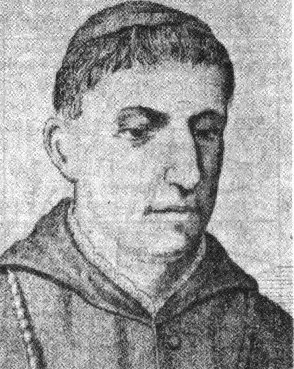The Dominicans in the Philippines


The original Sto. Domingo Church in Intramuros is said to be based from the architecture of the York Cathedral in Great Britain. It was one of the first buildings bombed by the Japanese in WWII.
The Dominican Order (The Order of Preachers/Order of St. Dominic) was confirmed an Order by Pope Honorius III in 1216.
The first Dominicans to arrive in the Philippines was Domingo Salazar, the first Bishop of Manila and his companion Cristobal de Salvatierra in 1581. It was only ni 1587, after theAugustinians, Franciscans and theJesuits, that the first batch of religious composed of 15 men arrived at the port of Cavite and established the Province of the Most Holy Rosary of the Philippines.
After their arrival, four were immediately sent to Bataan and six to Pangasinan while the remaining five established Sto. Domingo in Intramuros. They are credited with founding many of the important towns in these two provinces as well as a few in the present day province of Tarlac.
In Manila, they took charge in the evangelization of the Chinese at the Parian and made the country their base for missionary work in the rest of Asia. One such missionary trip in Japan during the first half of the 17th century saw the martyrdom, among others, of the Filipino-Chinese Lorenzo Ruiz, the first Filipino saint.



Ivana Church in Batan Island, Batanes

Malaueg (Rizal) Church in Cagayan province.
In 1594, the Dominicans evangelized the fertile Cagayan Valley, establishing many of the major towns that we know today. They extended their missionary work in the Babuyanes in 1619 and permanently set-foot in Batanes in 1783.
In the intellectual front, the Order established in 1611 what now is the University of Sto. Tomas, the first university in Asia and predates Harvard University by 60 years. A few years before, in 1593, the first two books in the Philippines were published. Both are entitledDoctrina Cristiana, one in Chinese characters while the other was in Tagalog and Spanish. It was also the Dominicans who introduced movable type in the country. Other books were also published including ones on grammar and the local languages that they have extensively studied.


Some common Dominican symbols: (top left) fleur-de-lis, Dupax del Sur Church; (top right) marian symbol, Tuguegarao Cathedral; (bottom right) dog of St. Dominic, Bambang Church; (bottom left) Christ's monogram, Dupax del Sur Church

The Dominican seal found in Gamu, Isabela

The Dominicans evangelized exclusively in Bataan, Pangasinan, where the popular devotion to the Lady of Manaoag is established, parts of Zambales, Cagayan Valley comprising the provinces of Nueva Vizcaya, Isabela and Cagayan as well as the Babuyan and Batanes island groups. In Manila, they built the Binondo Church as well as the Sto. Domingo, now located in Quezon City after the mother church in Intramuros was destroyed, where the yearly devotion to theLa Navalis well attended.
In many of the churches they built in these areas, the Dominican seal and other symbols can be found. The Dominican cross, with thefleur-de-lisat each end inscribed within a circle is a common emblem. Specifically in Tuguegarao, Isabela and Nueva Vizcaya churches, the emblems of the Virgin Mary, Christ and St. Dominic (shown above) plus the sun and the moon are often seen on the façade or as decorative elements in the interior.


The peak of Dominican brick architecture, Tumauini Church in Isabela.

Dupax del Sur Church in Nueva Vizcaya, a national treasure
One of the lasting legacies of the Dominicans are the massive brick churches they built in the Cagayan Valley. The best example of this, and perhaps, can be said, the peak of Dominican brick architecture is the stunning Tumauini Church in Tumauini, Isabela.
The level of artistry and intricacy found at its façade in the form of decorative elements just blows one away. It is also one of the few intact churches in the country sporting a circular belfry whose design reminds one of a massive wedding cake.
In Florentino Hornedo’s book,On the Trail of Dominican Engineers, Artists and Saints in the Cagayan Valley and Batanes, mentions aCagayan stylethat is apparent in the many churches built in this area. Here, the silhouette of the Tuguegarao Cathedral is echoed in the churches of Alicia in Isabela, Bambang, Dupax del Sur and Bayombong Cathedral in Nueva Vizcaya and the former Calasiao Church in Pangasinan before it was renovated as a result of the earthquake of 1892.

Calasiao Church in Pangasinan used to have the Tuguegarao Cathedral silhouette but was remodelled after the 1892 earthquake.
Thanks to these two useful technologies that let you work remotely from anywhere – Hosted Cloud Desktop and SharePoint Hosting Service from one of the leading providers of cloud based solutions –Apps4Rent, you can also add your MS office to the same desktop throughwww.O365CloudExperts.com. Enhance the performance of your business with top-notch IT/Cloud infrastructure services at affordable prices fromKatalyst Partners – Managed Service Provider.


